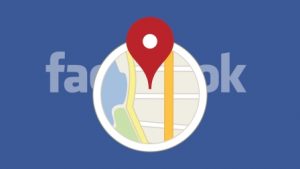— July 17, 2019
Getting approved for a small business loan from traditional lenders or the SBA is difficult. A growing number of businesses are securing funding through online lenders.
What do restaurants, auto parts stores and essentially all businesses have in common? They can’t survive for long without some combination of cash or financing.
A significant lapse in cash flow, for example, could jeopardize a restaurant’s ability to buy the ingredients it needs to serve the dinner crowd. And retailers may be able to stock some of their shelves on a consignment basis, but they still need to fund their payroll, pay rent, cover operating expenses or make more ambitious moves, like opening up new locations.
Cash flow can fluctuate unpredictably, especially for startups and small businesses, which is why many small firms rely on credit cards and business loans to keep the doors open.
Loans backed by the Small Business Administration can offer attractive interest rates, but that won’t help if you don’t qualify. And meeting the requirements for a conventional business loan from a traditional lender can be difficult, especially if your business is just starting out or you have a so-so credit history.
The Decline of Small Business Lending
Traditional small business lending contracted sharply following the U.S. financial crisis in 2008 and has been slow to return to pre-crisis levels. Small businesses still find it difficult to get financing from traditional lenders, in part because many community lenders — traditionally a key source of small business financing — shuttered after the crisis.
Nearly 20% of small businesses report being denied credit, according to a survey by the Kauffman Foundation.
And those business owners who get approved for a loan or line of credit often don’t receive the full amount that they were seeking. More than half of small businesses that applied last year for a loan of $ 250,000 or less received a smaller amount, according to the Federal Reserve.
The typical reasons for being denied financing are low credit score, too much debt, not enough collateral, insufficient credit history and weak business performance.
An Attractive Alternative
Small business owners who have been denied loans from traditional sources may have better luck getting financing from a bevy of alternative lenders that have emerged in the last decade.
These non-bank, online lending companies offer individuals or small business owners options with less stringent requirements. Many do not require collateral.
These lenders are a big factor in why the number of small businesses that say they’re able to access the capital they need has been rising in recent years, according to the National Small Business Association.
Business applications to online lending companies have been increasing, with some 32% of applicants turning to online lending in 2018, up from 24% a year earlier, according to the Federal Reserve.
The U.S. market for alternative business loans is expected to hit $ 350 billion by 2025, according to research from Balboa Capital.
Easier To Qualify
Applying for a conventional business loan typically requires firms to have a good credit score, provide collateral and present their business plan, in addition to turning over all manner of financial records, including tax returns and bank statements.
Alternative lending companies don’t always need to see financial statements and will accept average credit scores. They’re also more likely than traditional lenders to lend smaller amounts. Another perk: Their online application process tends to be faster and easier.
That’s one reason 54% of businesses with riskier credit profiles are more likely to apply to an online lending company than a small bank, according to the Federal Reserve.
Some Caution Required
Getting approved for financing by an alternative lending company may be easier, especially if your credit score isn’t stellar, but business owners must weigh that against the possibility they may have to pay higher interest rates and loan fees.
Many alternative lenders charge significantly higher interest. Consider that annual percentage rates, or APRs, from banks and credit unions range from about 4% to 13%, while loans from online loan companies can run between 7% to more than 100%, depending on the risk, according to financial data firm ValuePenguin.
One reason for the higher APRs is online lenders’ financing terms tend to include sharply higher fees for loan processing.
Alternative loans can be a lifeline for your business during hard times or a supplement to more traditional sources of financing that have fallen short of your needs. But always consider the cost-benefit ratio, especially if the alternative financing being offered is too expensive.
This article was originally published on the author’s blog and reprinted with permission.
Business & Finance Articles on Business 2 Community
(54)
Report Post






